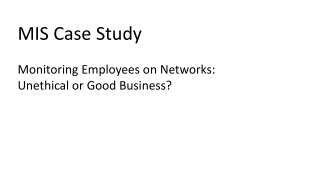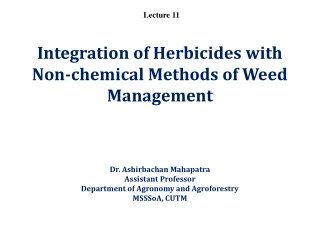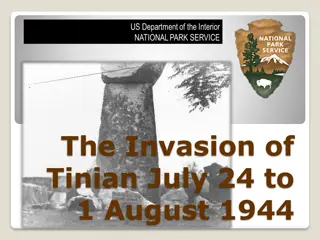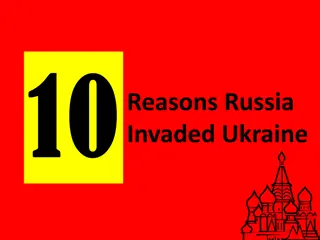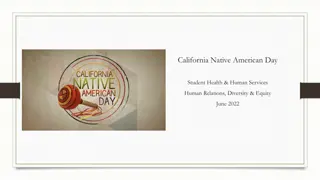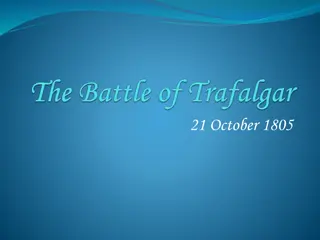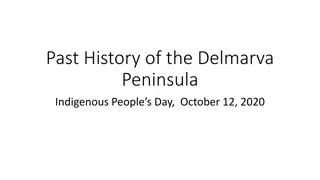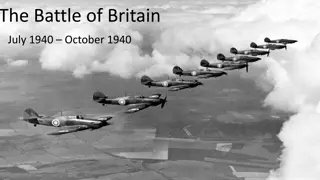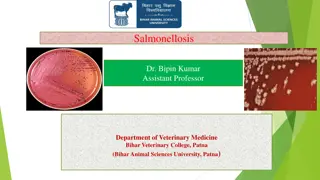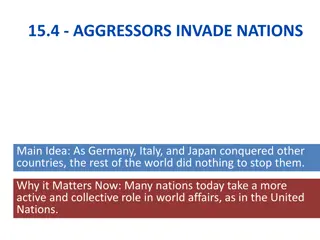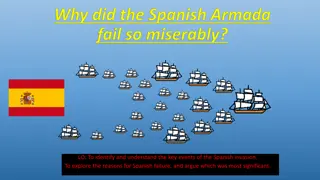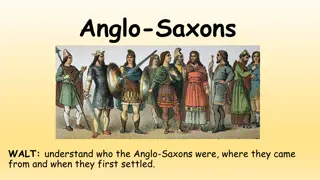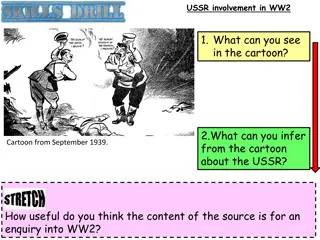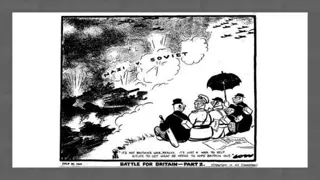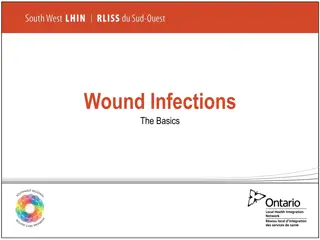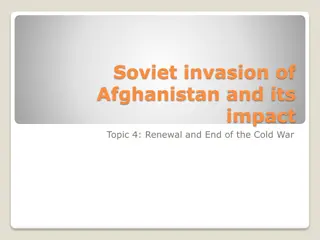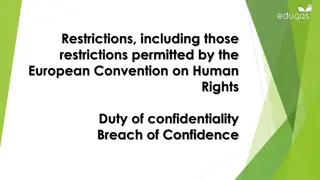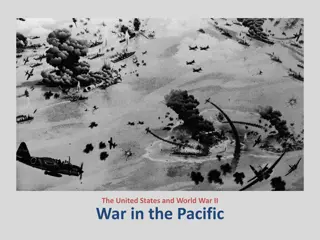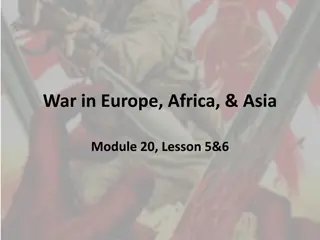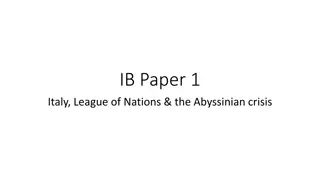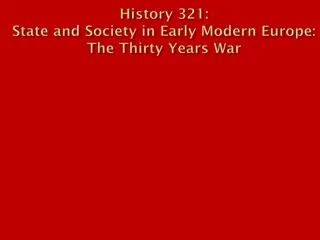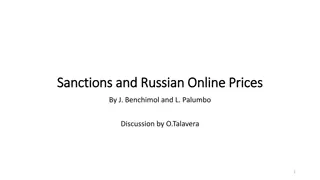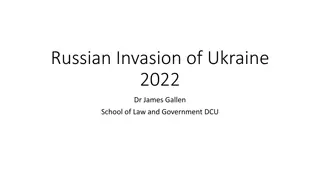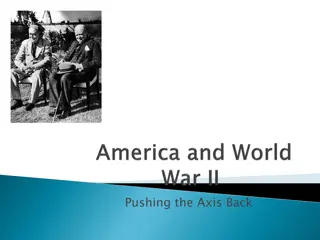Carcinogenesis
The multistep process of carcinogenesis at both phenotypic and genetic levels, including excessive growth, local invasion, and metastasis. Explore the six changes in normal cell physiology that result in cancer formation and the mechanisms of action of oncoproteins. Discover the role of important ge
7 views • 17 slides
MIS Case Study
Monitoring employees' use of company networks poses ethical dilemmas due to concerns of privacy invasion and trust issues. While some argue it is essential for business security and productivity, others view it as unethical surveillance. Managers must carefully consider the impact on morale and lega
1 views • 11 slides
Integrating Herbicides with Non-Chemical Weed Management Methods
The concept of weed management involves methods to enhance crop growth while discouraging weed invasion. Evolution shows the progression from manual labor to chemical methods. Weed management principles include eradication, prevention, and control. Eradication involves complete removal of weeds, whi
1 views • 34 slides
Challenges and Future Prospects for Cypriot Banks
The presentation delves into the global challenges faced by Cypriot banks, including the economic impacts of the pandemic and the Russian invasion of Ukraine. It highlights advancements in anti-money laundering efforts, the adoption of ESG standards by Cypriot banks, and the importance of addressing
0 views • 34 slides
The Invasion of Tinian - July 1944: A WWII Historical Account
The Invasion of Tinian in July 1944 was a crucial military operation during World War II. American forces, led by Major General Harry Schmidt, clashed with Japanese defenses on the island. The invasion involved intense pre-war bombardment, amphibious landings on multiple beaches, and strategic advan
1 views • 27 slides
Understanding Bacterial Pathogenesis: Key Concepts and Factors
Bacterial pathogenesis involves the ability of certain bacteria to cause disease by attributes such as transmissibility, adherence, motility, invasion, and toxigenicity. Pathogens can exploit host defenses, while virulence determines the severity of infection. Learn about opportunistic pathogens, no
7 views • 36 slides
World War 2 Key Events and Operations
World War 2, spanning from 1939 to 1945, saw significant events like the invasion of Poland, Operation Barbarossa, D-Day landings, and the conclusion with V-E and V-J Days. Operations such as Dieppe (Operation Jubilee) in 1942 taught crucial lessons in military strategy and coordination. The Atlanti
2 views • 38 slides
Drone Detection Using mmWave Radar for Effective Surveillance
Utilizing mmWave radar technology for drone detection offers solutions to concerns such as surveillance, drug smuggling, hostile intent, and invasion of privacy. The compact and cost-effective mmWave radar systems enable efficient detection and classification of drones, including those with minimal
0 views • 8 slides
Overview of Genitourinary Tract Infections and STIs by Prof. Dr. Mete Kılcıler
Genitourinary Tract Infections and Sexually Transmitted Infections (STIs) are common conditions affecting both men and women. This article, presented by Prof. Dr. Mete Kılcıler from the Department of Urology at Bahçeşehir University School of Medicine, delves into the various aspects of UTIs, in
2 views • 47 slides
Sub-Saharan Kingdoms of Ghana and Mali: Rise and Fall
The Sub-Saharan Kingdoms of Ghana and Mali were powerful empires in Western Africa, known for their wealth in gold and salt trade. Ghana emerged in 500 A.D. as the first great traders in West Africa, with strong rulers and a well-trained army. The empire of Ghana controlled all gold trade and had a
2 views • 17 slides
Understanding Russia's Invasion of Ukraine: Key Reasons Revealed
The invasion of Ukraine by Russia was driven by a combination of factors, including geopolitical strategic interests, safeguarding Russian populations, control over choke points like Crimea, and securing energy resources. The conflict also involves the significance of Ukrainian pipelines in European
0 views • 26 slides
The Indigenous History of Los Angeles: A Journey Through Time
Explore the rich history of the Native American tribes - Ventureño, Gabrielino, Fernandeño, and Chumash - in Los Angeles over 200 years ago. Learn about their peaceful way of life, the Spanish invasion's impact, and the importance of acknowledging and honoring California Native American Day.
0 views • 12 slides
The Battle of Trafalgar: A Historic Naval Triumph
In 1805, the Battle of Trafalgar secured British naval supremacy and thwarted Napoleon's invasion plans. Admiral Horatio Nelson led the British fleet to victory, although losing his life in the process. The battle, marked by strategic maneuvers and fierce engagements, saw the British capturing enemy
1 views • 9 slides
Uncovering the Past: Indigenous History of the Delmarva Peninsula
Delve into the rich indigenous history of the Delmarva Peninsula, acknowledging the injustices and hardships faced by Native American communities. From Columbus' invasion to the Trail of Tears, explore the impact of colonization on indigenous peoples and the ongoing efforts to address historical mis
0 views • 15 slides
The Battle of Britain: Historical Overview and Significance
Explore the pivotal Battle of Britain that took place from July to October 1940, a critical turning point in World War II. Understand the significance of Operation Sea Lion, Winston Churchill's pivotal role, and the strategic importance of this battle. Learn about the key events, phases, and motivat
2 views • 8 slides
Salmonellosis: Causes, Clinical Presentations, and Transmission
Salmonellosis is caused by the gram-negative bacterium Salmonella enterica. It predominantly affects warm-blooded vertebrates, leading to carrier states, septicemia, enteritis, and other clinical presentations like abortion and arthritis. The disease is transmitted through contaminated foods of anim
0 views • 15 slides
Japan's Aggression in China: The Atrocities of Invasion
Japan's aggressive expansion in the 1930s led to the invasion of China, marked by incidents like the seizure of Manchuria and the brutal atrocities in Nanjing. The international community's failure to intervene effectively underscores the importance of collective action in global affairs, a lesson s
0 views • 24 slides
The Lone Star Republic: Sam Houston's Presidency Challenges
During Sam Houston's presidency in the Lone Star Republic, he faced various challenges such as budget constraints, threats of invasion from Mexico, and annexation by the United States. Houston implemented cost-cutting measures, tried to establish peaceful relations with Native Americans, and dealt w
0 views • 13 slides
SRAP Markers: Feasible Tool for Invasion Genetics of Freshwater Fish
Molecular tools, like Sequence-Related Amplified Polymorphism (SRAP) markers, play a crucial role in studying invasion genetics of freshwater fish. SRAPs offer a reliable and efficient way to assess genetic diversity and variations in non-native species, aiding in population genetics studies of inva
1 views • 5 slides
The Spanish Invasion of 1588: Key Events and Failures
The Spanish Invasion of 1588 saw Spain's powerful Armada facing off against England in a bid to conquer the island nation. Despite Spain's advantages in fleet size and troop numbers, various factors such as strategic decisions and lack of coordination led to the failure of the invasion. Analyzing th
0 views • 11 slides
The Aliens Have Landed: A Strange Encounter in Verse
In this quirky poem by Kenn Nesbitt, the arrival of aliens is described in vivid detail, portraying them as grotesque creatures with tentacles, weird machine heads, and bodies resembling cauliflower. The poetic verses highlight the aliens' peculiar features and humorous depiction, culminating in a s
0 views • 7 slides
Origins and Migration of the Anglo-Saxons
The Anglo-Saxons originated from Denmark, Germany, and the Netherlands, arriving in England via wooden boats to establish themselves as warrior-farmers. This invasion led to the Angles and Saxons dominating and merging into the Anglo-Saxons, who settled in Britain for reasons such as conquest, farmi
0 views • 8 slides
The USSR and Nazi Germany: The Pact of 1939
In the lead-up to WWII, the USSR signed a non-aggression pact with Nazi Germany, shocking the world. This pact included secret clauses dividing Poland and avoiding conflict for ten years. The USSR's alliance with Germany was a strategic move by Stalin due to fear of invasion and perceived weakness o
0 views • 13 slides
Exploring Facial Recognition Technology in Digital Citizenship
Dive into the world of facial recognition technology with a focus on digital citizenship. Learn about its benefits, risks, trends, and potential invasion of privacy. Delve into discussions on the use of facial recognition in various devices and its implications for security and convenience, using re
0 views • 11 slides
World War II in Europe: The Invasion of the USSR and American Involvement
Hitler's plans to invade the USSR starting in 1940, the invasion through the Balkans, Operation Barbarossa in 1941, the challenges faced by German troops, the siege of Leningrad, the US providing aid to its allies, and the Atlantic Charter amid German submarine attacks.
0 views • 7 slides
Understanding Wound Infections: A Comprehensive Overview
Explore the various stages of wound infections on a continuum from contamination to systemic infection. Learn how to identify and manage each stage, from presence of microbes to invasion of surrounding tissues. Discover the subtle signs of local and spreading infections, and the serious implications
1 views • 30 slides
Political Turmoil in Pre-Babur India
Babur, a Turkic ruler, seized power in India in the early 16th century amidst a chaotic political landscape. With weak rulers in Delhi and conflicting powers across the subcontinent, Babur's successful invasion marked a significant shift in Indian history, leading to far-reaching consequences.
0 views • 8 slides
Impact of Soviet Invasion of Afghanistan on the End of the Cold War
The Soviet invasion of Afghanistan in 1979 triggered a significant shift in international relations. The US responded with protests, sanctions, and support for Afghan rebels, leading to the collapse of detente. The conflict eventually led to the withdrawal of Soviet troops in 1990, contributing to t
0 views • 5 slides
Understanding Infectious Ectromelia in Laboratory Animals
Infectious Ectromelia, also known as Mousepox, is a viral disease causing high mortality in adult mice and limb amputation in surviving cases. It is characterized by skin lesions, rash, and generalized fatal disease. Various strains of the virus exist, with transmission occurring through abrasions o
0 views • 16 slides
Understanding Breach of Confidence and Privacy Rights in English Law
English law does not provide a specific right to privacy, but breach of confidence laws offer protection against unauthorized disclosure of private information. While there is no overarching invasion of privacy tort, legal controls exist to balance freedom of expression with respect for individual p
0 views • 18 slides
World War II in the Pacific: Unfolding of Events Post Pearl Harbor Attack
The war in the Pacific escalated post the Pearl Harbor attack with Japan's domination over various territories, including the Philippines leading to significant battles like the Japanese Invasion of the Philippines and Doolittle's Raid. American strategy, led by figures like Gen. MacArthur, played a
0 views • 12 slides
World War II Campaigns in Europe, Africa, and Asia
The module discusses various campaigns during World War II in different regions such as the Atlantic, Eastern Front, North Africa, Italy, Western Front, and Pacific. It highlights significant battles like the Battle of Stalingrad in 1942, the strategic decisions made by leaders like Stalin, FDR, and
0 views • 18 slides
Impact of the Normandy Invasion on Britain's Language and Society
Middle English became the language of Britain from 1066 to around 1500 after the Normandy Invasion led by William the Conqueror. This event introduced significant French influences to British language and culture. Additionally, the Canterbury Tales by Chaucer satirize members of different social cla
0 views • 16 slides
The Importance of Privacy in the Media Landscape
Privacy is the right to be left alone and control unwanted publicity. It is a central ethical issue in mass media, with concerns over invasion by news, advertisers, government, and the internet. Conflicts arise in various scenarios, from data collection to job screening methods. The modern world is
0 views • 42 slides
Events Leading to WWII: Treaty of Versailles to Japan's Invasion of Manchuria
Events like the Treaty of Versailles, Great Inflation in Germany, the October 1929 Depression, and Japan's invasion of Manchuria were significant precursors to World War II. The flawed Treaty of Versailles, economic turmoil in Germany, global depression, and territorial ambitions of Japan all contri
0 views • 25 slides
Abyssinian Crisis: Italy, League of Nations, and the Invasion of Abyssinia
The Abyssinian crisis of the 1930s was sparked by the Wal-Wal Incident, leading to the Italian invasion of Abyssinia. Mussolini's aims in invading Abyssinia included territorial expansion and revenge. Despite diplomatic efforts, the invasion occurred with Mussolini believing that the UK and France w
0 views • 11 slides
The Swedish Invasion of the Holy Roman Empire: Motives, Success, and Challenges
Sweden's invasion of the Holy Roman Empire was initially driven by political motives rather than religious reasons. The Swedish success was attributed to their military expertise and alliances, but they faced challenges due to insufficient resources and reliance on German Protestant princes. Success
0 views • 28 slides
Impact of Sanctions on Russian Online Prices Following Ukraine Invasion
The paper analyzes the impact of international economic sanctions on Russian online prices post the Ukraine invasion. Findings suggest significant differences in price dynamics, with sanctions potentially causing an average CPI increase of 11.7% in Russia. The study utilizes daily web-scraped data t
0 views • 11 slides
Legality and Self-Defence in the Russian Invasion of Ukraine 2022
The Russian invasion of Ukraine in 2022 raises critical issues regarding the legality of the use of force under international humanitarian law and the United Nations Charter. The article discusses the prohibition on the use of force, the UN Security Council's role, and the right to self-defence unde
0 views • 22 slides
Allied Operations in World War II Leading to the Normandy Invasion
During World War II, strategic operations such as pushing Axis forces back in Italy, the Casablanca Conference decisions, and planning for the Normandy invasion played crucial roles in the eventual Allied victory. Key events included capturing Sicily, the arrest of Mussolini, agreements between worl
0 views • 8 slides

